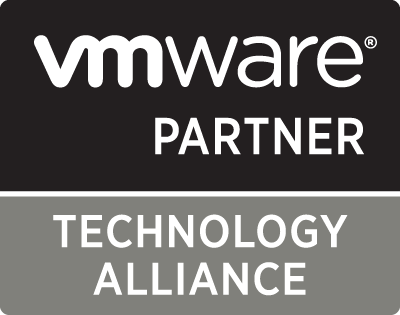Storage Virtualization
2020-10-19 | Nick Zhao
Storage virtualization abstracts the storage hardware resources by software measure that integrates the services or functions of one or more storage target devices with other additional functions, providing users data storage service uniformly through the abstraction layer. It can be categorized into three types: host-based storage virtualization, storage device-based storage virtualization, and network-based storage virtualization.
Host-based virtualization
The host-based storage virtualization system will install storage virtualization management software in the server host OS, so that the storage space of the server can cross multiple heterogeneous disk arrays for data mirroring protection. Generally, it is completed by logical volume manager (LVM) software in the server OS varies from different OS types. The implementation principle is to put two LUNs from different storage devices in the same volume group (VG) of the server OS, and perform data mirroring between the two physical LUNs.
Requiring no additional hardware, host-based storage virtualization becomes the most easy-to-deploy, cost-effective and well-developed solution. However, since the need to install storage virtualization software in the host OS will bring certain overhead and take up the processing time of the host CPU, this solution has poor scalability, and the actual running performance is not very good, which may affect the stability and security levels of the system that leads to inadvertent unauthorized access to protected data.
Storage device-based storage virtualization
The storage virtualization system based on storage devices mainly works through adding resource virtualization function modules to the controller host of the enterprise storage array, making the storage array available for virtualized management of physical storage resources other than its own storage space. In the recent years, various storage vendors have applied this form of virtualization technology to their enterprise-level storage controllers, forming a storage virtualization platform based on storage device controllers.
This storage array-based controller enables to connect to other brands of heterogeneous storage arrays. Therefore, both the internal storage medium of the device itself and external devices will appear in the storage controllers with virtualization functions which can be managed in the same.
By implementing storage device-based storage virtualization, the original storage system no longer needs to manage storage resources, thus reducing the difficulty of heterogeneous storage management and complexity of the storage network. It can perform overall pool management of internal and external storage resource through unified LUN mapping provided by virtualization system. However, the efficiency of LUN mapping service will be limited by the performance of the storage controller.
Network-based storage virtualization
With the emergence of NAS and SAN storage architectures, the separation from storage as a whole to storage media, storage controllers and servers has succeeded. Servers and storage controllers are connected through network (TCP/IP or FC), and storage resource sharing can be flexibly and efficiently achieved, while the network also becomes the best location for storage virtualization.
Network-based storage virtualization embeds intelligent management device of storage resource at the network layer, making physical storage resources between servers and storage array an abstraction. It connects heterogeneous storage arrays to the SAN switch of storage layer through FC interface, putting them altogether to an in-band storage virtualization device. All LUN mapping and I/O requests together with data will be transmitted to the server through the device, while server is only able to see the LUN provided by the storage virtualization device without direct interaction.
With independent storage virtualization management device, network-based storage virtualization provides a variety of new functions that the other two do not have. It can not only achieve data replication of local heterogeneous storage, but also succeeds in remote data replication for disaster recovery. It’s a rather cost-effective solution for giant enterprises to construct storage virtualization and disaster recovery within data centers.
But this method is much more complicated to implement than the other two types of storage virtualization. It needs to interrupt all the LUN mapping from the server to the storage device and re-run it to the storage virtualization device. And after the process done, all the added storage devices can’t be de-virtualized, because all metadata of the storage LUN has all been saved on the storage virtualization device.
Share on:



 English
English


















